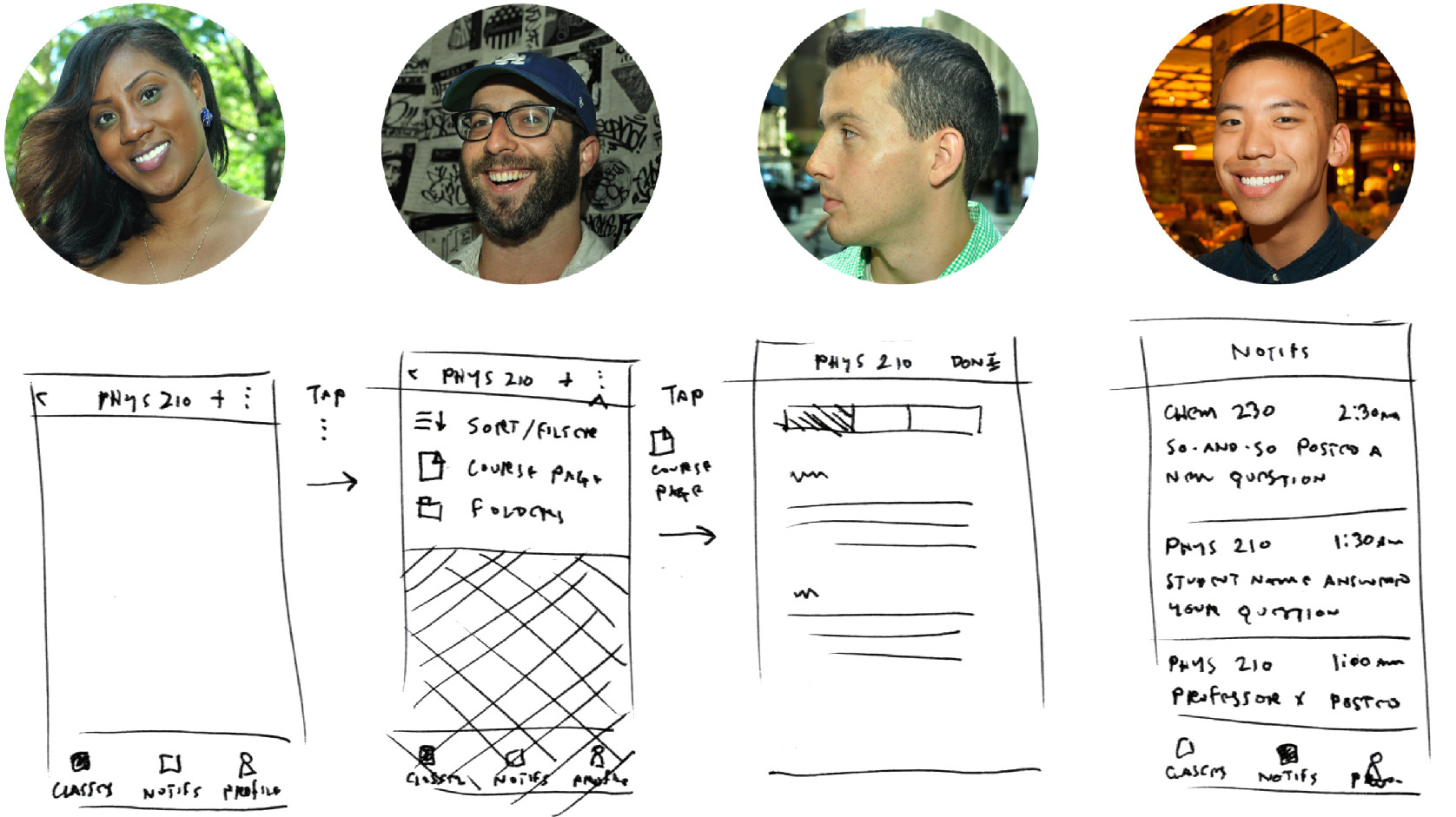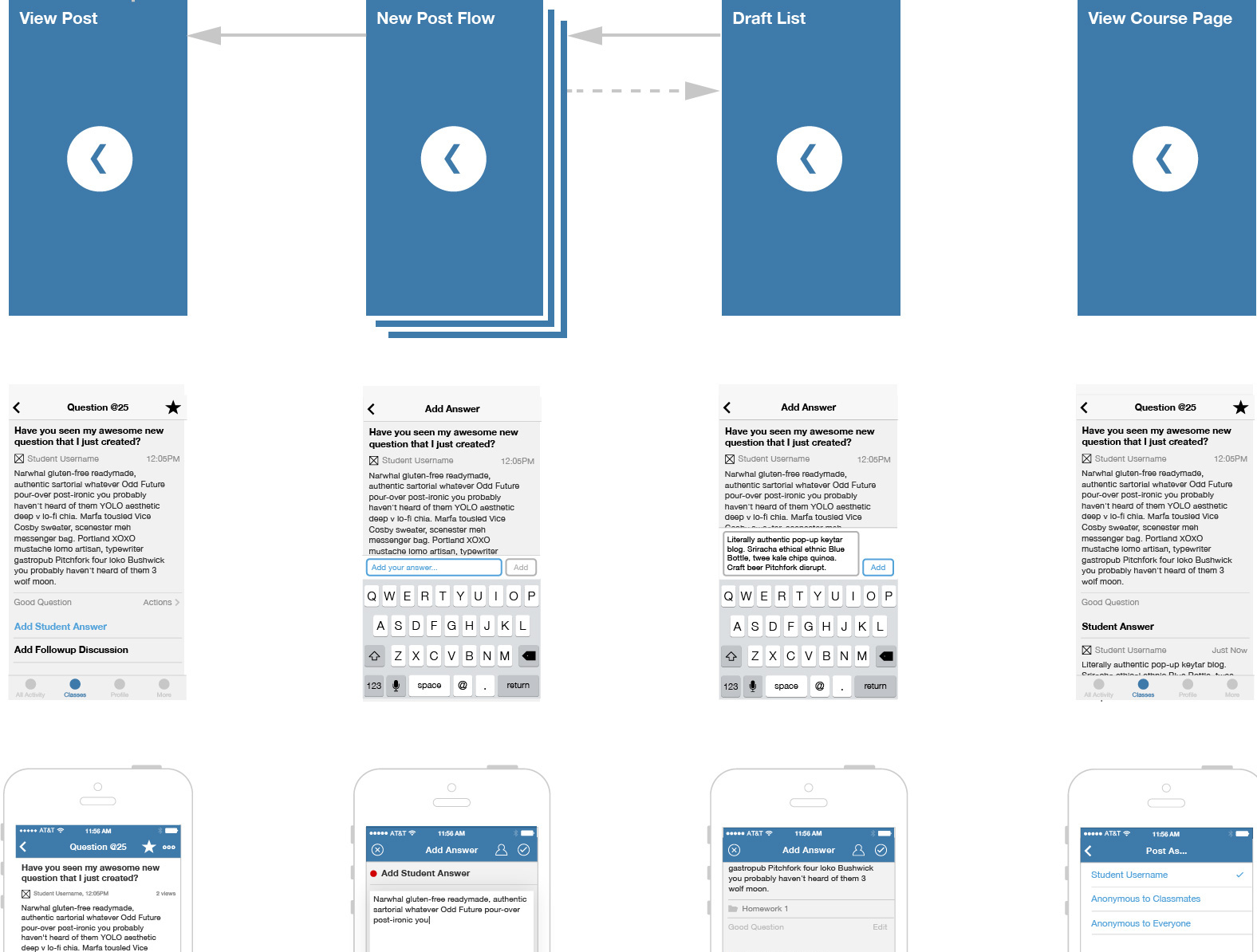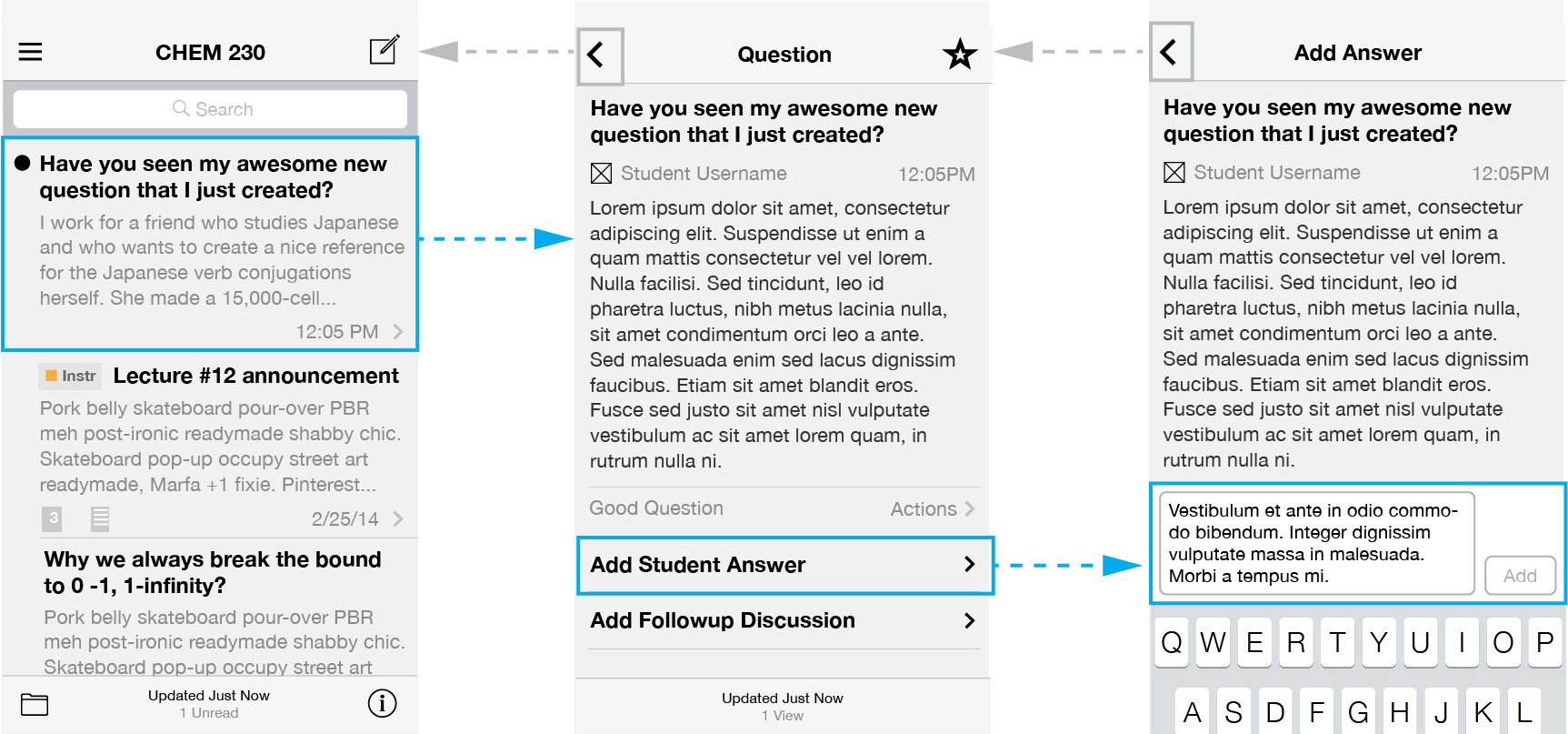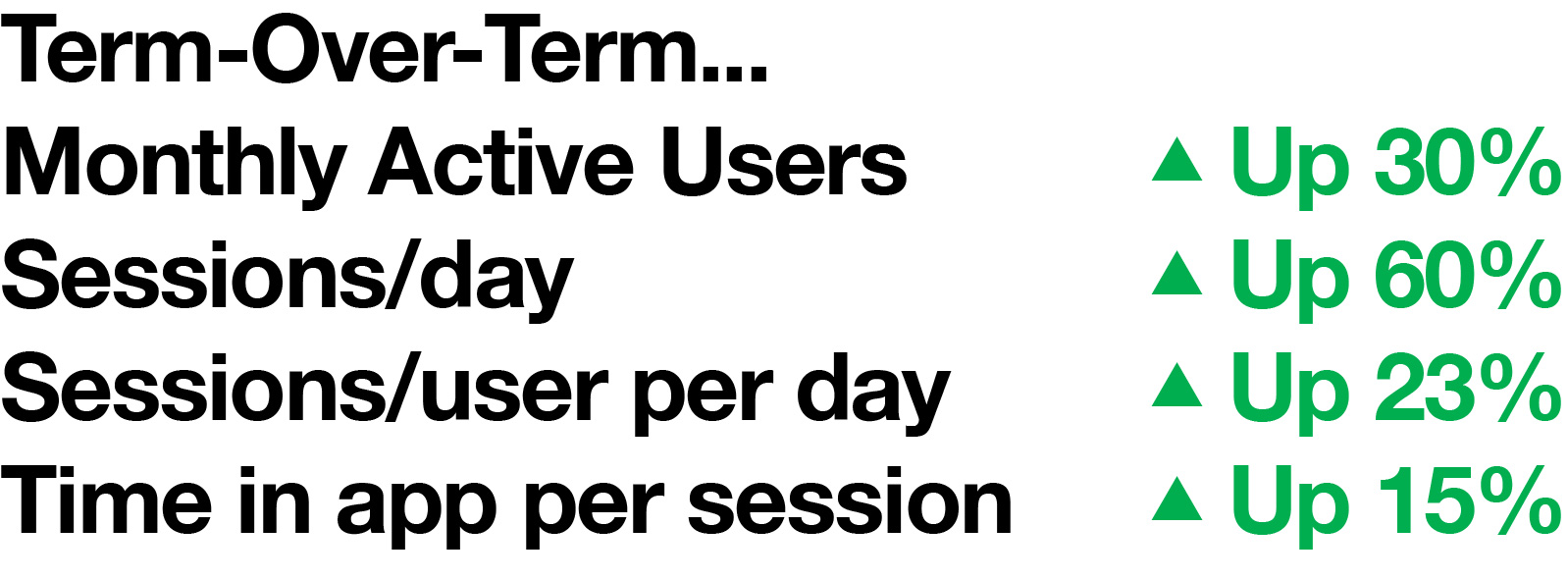PIAZZA
Piazza is an education technology company founded in 2009, whose flagship Q&A web application is central to teaching in STEM and Computer Science departments across the US and the world.
In 2014, we built and released ground-up redesigned and rewritten versions of Piazza’s Android and iOS apps. User-centered design was key: focusing on the needs of Q&A users who are checking in on their classes on the go.




